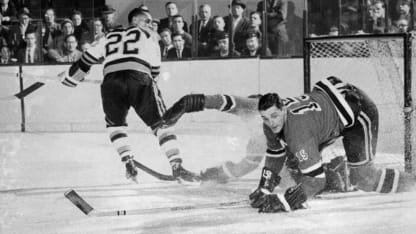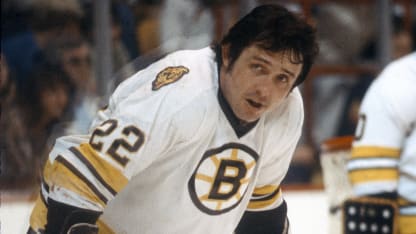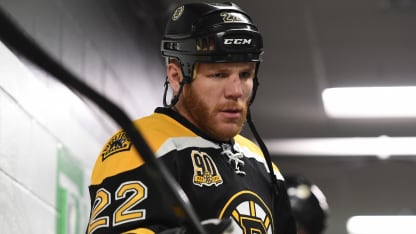"They just said, 'Here,'" O'Ree said of the Bruins equipment handlers at the time. "I put it, on and I wore it. I didn't ask for 22. It was just a number presented to me."
O'Ree and No. 22 forever became synonymous in Bruins history on Tuesday when his jersey banner was hoisted to the rafters of TD Garden before Boston played the Carolina Hurricanes.
His number was the 12th retired by Boston, joining those of
Lionel Hitchman
(No. 3, 1934),
Dit Clapper
(No. 5, 1947),
Eddie Shore
(No. 2, 1949),
Milt Schmidt
(No. 15, 1957),
Bobby Orr
(No. 4, 1979),
Johnny Bucyk
(No. 9, 1980),
Phil Esposito
(No. 7, 1987),
Ray Bourque
(No. 77, 2001),
Terry O'Reilly
(No. 24, 2002),
Cam Neely
(No. 8, 2004) and
Rick Middleton
(No. 16, 2018).
O'Ree wasn't the first player to wear No. 22 with the Bruins and he wasn't the last when he wore it in his final game with Boston in 1961. Thirty-five Bruins players have worn the number, 25 of them after O'Ree did.
RELATED: [Learn more about Willie O'Ree]
The previous owners range from journeymen to some of the hockey's greats. Some of them were unaware that they shared the number with O'Ree, who became the first Black player in the NHL when he debuted against the Montreal Canadiens on Jan. 18, 1958.
Hockey Hall of Fame defensemen
Brad Park
and
Brian Leetch
wore the number. So did "NHL on TNT" studio analyst Rick Tocchet, Bruins radio analyst Bob Beers, Florida Panthers chief commercial officer
Shawn Thornton
, as well as
Butch Goring
and
Jozef Stumpel
.
Leetch remembers when then-Bruins general manager Mike O'Connell handed him a No. 22 jersey at a press conference after the former New York Rangers All-Star defenseman signed with Boston as a free agent in August 2005.
Leetch, a two-time
Norris Trophy
winner as the best defenseman in the NHL (1992, 1997) who scored 1,028 points (247 goals, 781 assists) in 1,205 games with the Rangers, Bruins and Toronto Maple Leafs, wore No. 2 in New York but it wasn't available in Boston because it had been retired for Shore.







